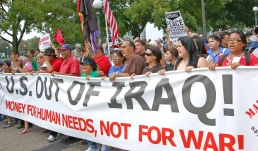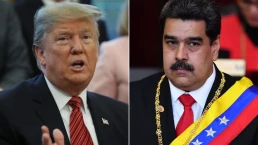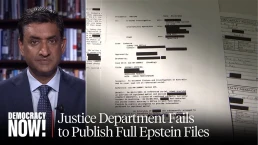Jeremy Varon’s new book, “Our Grief is Not a Cry for War,” honors the commitment and complexity of the movements to end the wars in Iraq and Afghanistan.
By Frida Berrigan, Waging Nonviolence
As I read Jeremy Varon’s new book “Our Grief is Not a Cry for War: The Movement to Stop the War on Terror,”I wanted to scream: We were right!
The peace movement predicted and forewarned the cataclysm that followed the opening salvos of the “global war on terror.” We foresaw the decades of war, the lives lost, the trillions wasted, the blowback and consequences that are still ballooning outward decades later.

It is not enough to be right, of course. It didn’t save the lives of the 46,319 civilians that independent agencies guesstimate were killed in Afghanistan under “Operation Enduring Freedom.” It won’t bring back the estimated 600,000 Iraqis killed just in the first four years of “Operation Iraqi Freedom.” Being right doesn’t restore the obliterated infrastructures of those two nations, or restore to life the roughly 7,000 U.S. military personnel killed in those two wars. And, sadly, being right does not return $8 trillion in direct and indirect war costs to U.S. coffers.
But, being right is not nothing, either. “Our Grief is Not a Cry for War” is at turns inspiring, harrowing and funny. Did you know that the peace group Code Pink would have been called “Hot Pink,” but the domain name was already claimed by a porn company? You do now!
Weaving together the voices and reflections of hundreds of activists and distilling 24 years of history, Varon’s book is ambitious in scope and scale as it grapples with a deeply un-American hypothesis: That this effort had value, meaning and impact even though it did not result in “winning.”
As Varon writes at the very end of the book, “the perpetration of grave injustices such as those the War on Terror entailed raises questions of who spoke up against them and why. Those protesting the War on Terror, I believe, have a deserving place in the annals of conscientious American dissent, as they sought to create a more peaceable and moral world. Telling their collective story is to honor their commitment, from which future movements may learn.”
Varon, a professor of history of the New School University, relates in crisp and copious detail how the people of the United States responded to the Sept. 11, 2001 attacks with sorrow, action and clarity: saying we did not want to see this crime perverted into a call for war. Millions of people around the world worked to prevent the bombardment of Afghanistan in October 2001 and the “Shock and Awe” invasion in Iraq in March 2003. And we kept right on working, on every conceivable front, ever since.
This book is not a feel-good nostalgia project. “Our Grief is Not a Cry for War” is detailed, critical and fully cognizant of the myriad of ways the movement failed. It highlights the contradictions and weaknesses of the political marriages of convenience, the compromises across sectarian divides hastily hashed out, and the lack of clarity that bedeviled the movement. In reality, it was many movements that knotted themselves into something somewhat unified and coherent for a relatively short period of time.
Varon teases out all these strategic differences and turf battles. The sectarian left — organizations like ANSWER, Not in Our Name and World Can’t Wait — are here. Without picking sides, or casting aspersions, Varon points out how these rivalries and political differences confused the public, wasted resources and consumed precious time. As one activist quipped to Varon, “we spent half our time fighting the war and half our time fighting each other.”
Varon also had to contend with the competing visions of what the movement was and who led it: Was it a peace movement or an antiwar movement? Were the resisters trying to stop one war or two? Were they trying to turn the United States communist or socialist? Or was the plan to usher in a new era of internationalism, peace and anarchy?
The answer is of course a little bit of all of that. And that is difficult. But so is writing a book about the national antiwar movement that started on Sept. 11, 2001 but really has its roots much further back and wasn’t limited to the U.S. In answering the question “why do they hate us?” Varon has to discuss half a century (or more) of U.S. foreign policy and its blowback to help the reader understand why the dramatic attack on a random Tuesday in 2001 didn’t come out of nowhere. It’s a masterfully concise section, a clear road map to further study for anyone who wants it.
Recent Posts
The “President Of Peace” Prepares For War
December 23, 2025
Take Action Now The Donroe Doctrine Hits HomeBy William D. Hartung, Tom Dispatch Earlier this month, the Trump administration released its new…
“Who Are They Protecting?”: Rep. Ro Khanna Urges Contempt Charges Over AG Bondi’s Epstein Redactions
December 22, 2025
Take Action Now “The House can act unilaterally on contempt, and this will be introduced by Thomas Massie. What the resolution will say is that…
Dems Demand Answers as Trump Photo Disappears From DOJ Online Epstein Files
December 21, 2025
Take Action Now “What else is being covered up?”By Brett Wilkins, Common Dreams Congressional Democrats on Saturday pressed US Attorney General…
Elon Musk Is Vowing Utopia Driven by AI and Robotics. Bernie Sanders Has a Few Questions
December 20, 2025
Take Action Now “I look forward to hearing about how you and your other oligarch friends are going to provide working people with a magnificent life…




